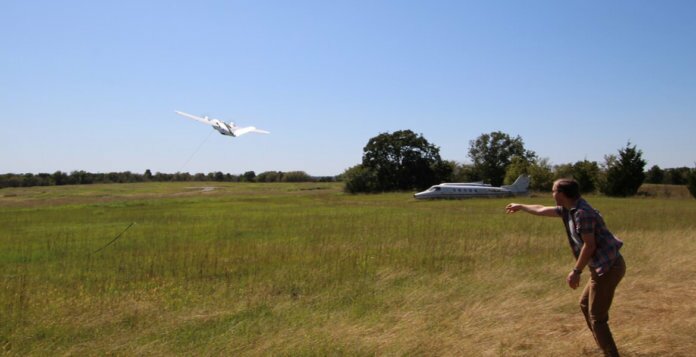
On Oct. 8, Oklahoma State University (OSU) and Vigilant Aerospace Systems conducted a demonstration flight using OSU’s 13-mile, beyond-visual-line-of-sight (BVLOS) corridor east of Stillwater, Okla.
The flight was used to evaluate BVLOS capabilities and demonstrate Vigilant’s latest FlightHorizon software, which provided airspace situational awareness. The flight was also a major field test for FlightHorizon 2, the latest version of Vigilant Aerospace’s airspace management and detect-and-avoid system.
The flight, which was fully autonomous, covered over 18 miles. It began at OSU’s Center for Forensics Explosives range near Pawnee and culminated in an autonomous landing at OSU’s Unmanned Aircraft Flight Station in Glencoe.
“The unmanned aircraft industry’s top needs continue to be autonomous safety systems, on-board detect-and-avoid solutions and better airspace management. This flight allowed us to make progress on all three by demonstrating our system’s capabilities over a much longer duration and distance, while providing active alerting and airspace visualization to the pilot and observers,” says Kraettli L. Epperson, CEO of Vigilant Aerospace.
The results from the flight provided a proof of concept for Vigilant’s unmanned traffic management (UTM) capabilities, which are currently in research and development, and will provide the basis for initial deployment of UTM capabilities using FlightHorizon.
The analysis of results from the demonstrations will also provide an understanding of the capabilities of autonomous UAS operations and provide data necessary for additional use cases, the partners say.
“This flight and the team of OSU research engineers and students and Vigilant Aerospace staff who conducted it represent a forward-looking approach to utilizing public-private partnerships to rapidly advance the technology and bring innovations to market,” says Jamey Jacob, director of the OSU Unmanned Systems Research Institute and John Hendrix chair professor in mechanical and aerospace engineering.
The flight, conducted with a twin-motor drone flying below 400 feet, used an FAA Certificate of Authorization (COA) with a visual observer. The COA was granted by the FAA in December 2018.
The Vigilant Aerospace software tracked dozens of manned aircraft across central Oklahoma during the flight and provided real-time alerting to the visual observer and pilot-in-command.
Vigilant Aerospace intends to conduct additional test and demonstration flights over the next several months, incorporating multiple radar units and additional telemetry data, with the goal of developing new ground-based and on-board safety systems for unmanned aircraft.









